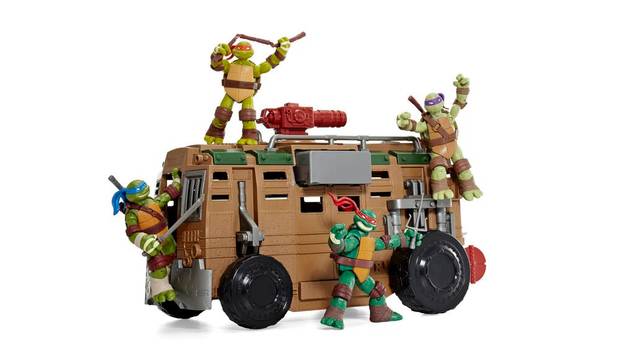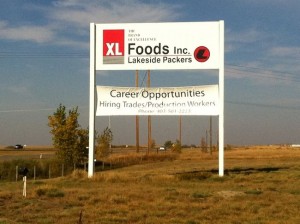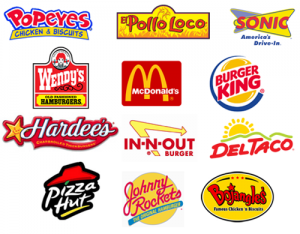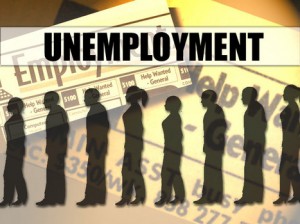Reaching equality between man and women has always been a struggle ever since the woman’s movement. However, inequality is still a problem in contrast between the roles of man and woman in the workforce. It is given fact that different regions of the world have different perceptions of genders; which are determined by their values and beliefs. I feel that it is also believed that there are certain qualities to qualify for a given job, thus these qualities are sometimes viewed as a selective perception. Furthermore, this leads to the bias of roles of man and woman. For instance, within a culture, people may believe that woman does not have the quality of a man to take on great power or to “even control a large amount of budget” due to a variation in personality qualities that defines a man and a woman. How is this definition accurate when these characteristics to define a gender are based on stereotyping, bias statements and a selective perception? All of these would only mean inequity between the roles of a man and woman. Does it mean that woman will just resist knowing they will always be second up next to the man?
Category Archives: Uncategorized
Response to: Why there is no McDonald’s and Starbucks in Vietnam?
According to the blog post “Why there is no McDonald’s and Starbucks in Vietnam?“, I definitely agree on the fact on why both of these two successful companies are not compatible with Vietnam, considering the economy of Vietnam, and also the barrier to entry. Market demands are significantly different and in fact from personal experiences in Vietnam, I would definitely prefer my coffee with condense milk over coffee brewed with milk and what not. In addition, Vietnam has a condense market when it comes to the “coffee industry” where monopoly doesn’t even exist considering how within a block there would be a coffee shop nearby and product differentiation is little to nothing. In contrast of Canada to Vietnam, Starbucks would be one of those monopolistic companies dominating the coffee industry here and they would compete with competitors by being more “attractive” than your local coffee shop to become dominant. Moreover this is nearly impossible to happen in Vietnam. And as for McDonalds to enter Vietnam with the high priced food on the menu would be seen to be unattractive to customers compared to establish fast food restaurants such as KFC and Lotteria.
Tough Economy Leads to trying times for toy makers
Over the past year of 2012, a decline in the toy sales industry was estimated being 5-6% in decline, and it will only get worse as the holiday season approaches. Substitution threats for these traditional toys would be the “Tech Giants” such as apple and their releases of the iPad, phone, iPod etc.; in addition with new gaming apps that are seen to be more fun. I find it surprising how the new implementation of technology and innovation as shifted the demand of recreational “toys” for children, especially for boys since they consider app games to be more spontaneous and fun with no harm whatsoever. In contrast to the traditional toys, wanting fun and exciting doesn’t necessarily mean safe, thus gives the toy makers a comparative disadvantage. For example, in an average household, new technologies are being used and promoted therefore the children’s of those family would be brought up with technology being a norm unlike families back a decade ago. In means of the survival of these toy making companies such as Hasbro and fisher price must excel in innovation since it is key in capturing back the attention of their consumers.
 It is said that retro toys are definitely back in for the holiday season.
It is said that retro toys are definitely back in for the holiday season.
Response to: Blog: The Business Ethic Blog
In the blog Profiting from Prison Labour, the author juxtapositions what is seen to be an unethical practice and how it is seen not to be so. Prisoners are being paid half of the wage of a non-prisoner; moreover, this is just another form of cheap labour where potential jobs for non-prisoners are nonexistence. I do agree that this issue can be seen is not unethical under the conditions if there is no force implemented on the prisoners to work and also if they do not have a problem with the pay. However, what is brought to my concern is how would a company is perceived through the lens of a consumer; which, in fact varies depending on their values and beliefs. Therefore there is large variance in how an organization is perceived under the sectors concerning human resource management. From how I see it, ethical or not, this is mostly determined by the consumers and how they would respond to such action of an organization. This would impact the company significantly if they are seen as “unattractive” by their consumers in such ways that would hurt them financially and their image.
 Above is Ph.D, an educator, speaker and consultant in the sector of Business Ethics, Chris MacDonald.
Above is Ph.D, an educator, speaker and consultant in the sector of Business Ethics, Chris MacDonald.
How your name will determine your liabilities for success within the workforce
In Canada multiculturalism is seen to be a norm, especially where I come from. However, according the article “How an ethic-sounding name can affect the job hunt” a study conducted had sent out 7000 resumes to potential employers and numbers significantly proves the fact that a name is an identity but it also determines an individual’s liabilities for success. Employers of Companies who are reluctant to change may be based on their rigid organizational culture where implementing change would throw off their norms within the organization. This would come with a price since if there’s a resistance to change then there is a resistance to new knowledge and people with a different set of skills being rejected. Thus, keeps an organization idle when wanting to grow in sectors of organizational efficiency, employment structure and innovation. Although it is hard to change the norms of an organization; the nature of the workforce, technology, social trends and world politics will only be acted upon with change and this may particularly be change in an organizations employee structure.
 Above is researcher; Philip Oreopoulos, assistant professor of economics at the University of Toronto and co-author of the study.
Above is researcher; Philip Oreopoulos, assistant professor of economics at the University of Toronto and co-author of the study.
Response to: A financial divulgence behind viral KPOP music video “Gangnam Style”?
To my surprise of watching the video many times; never has it occur to me that the video portrays such irony in contrast between the luxurious living styles in Gangnam vs. the living style in areas ranked below it. From my analysis the video seems like it is portraying Korea in the sectors of materialistic living, thus from a point of view can be seen as largely branding the nation of Korea. Therefore, I would assume people being exposed to the Branding of Korea would want to live largely like them and if they cannot then they would likely want to max out their credit card. This also brings a concern as to how the nation could afford such expenditures considering how on average an adult would have at least five credit cards. Moreover, with the combination of Korea’s free spending on luxurious things, maybe the branding of the Nation through the Gangnam style video is really to encourage Korea’s economic growth by exposing the world to the things that are Korean made, and branded.
The picture above is the contrast in irony between the two separate lives being compared
Heart and Stroke campaign uses zombies to promote CPR
The heart and stroke foundation, a non-profit organization had come up with a new niche for their marketing sector of the organization. Many of the things they have done before has been bland and too instructional to capture the attention of young individuals under the age of 35. In addition, statics has shown that the Cardiac Arrest rate has rose from 5% to 6% as Canadians lack the knowledge of CPR. Initially getting this ad campaign to be approved was highly difficult for the organization and in addition the cost of production was $1.4 million however the organization did it for less than 10% of the cost. The organization is mostly dependent on this ad to be known through social media since their budget did not allow television buy.
In contrast to the whole new niche of marketing for the heart and stroke foundation, having a new angle for capturing the attention of the target market and to be able to give out an important message serves a social-interest. Educating Canadians who lack this knowledge is also a valuable skill and everyone would have the ability to “undead” someone. The “in-your-face-style” marketing of this ad campaign is also clever in the since that it reflects itself in the social media world filled with many individuals under the age of 35 and it is also effective since sharing can be done in an instantly.
http://www.theglobeandmail.com/report-on-business/industry-news/marketing/heart-and-stroke-campaign-uses-zombies-to-promote-cpr/article4593241/
XL food workers question food safety at meat plan
Big meat processing food plant XL causes safety concerns for the public health causing a meat recall. XL has been questioned with their food safety system and also their quality of work when it comes to hands on work by XL employees. Many disturbing facts have been stated about the unhygienic workers and sanitary condition of the work place. It is evident that XL values quantity over quality and also workers considering the same since that’s where their pay is coming from.
The meat recall however does not do much harm to the meats brand name considering how they aren’t well known in the first place. Nonetheless, the names of their main customers such as Safeway, Superstore and Costco would most likely be hurt since they are widely known brands all over North America and XL will have a great amount of problems trying to get back their valued customers. Work ethics is now a big concern since this meat processing company is big in Canada, so therefore shutting down the plan was a necessary thing since many people were getting sick. Substitutes to other next best alternative would occur at this time, and resorting to other meat retailers is also a reaction for most to all consumers of the retailers whom imported meat from XL.
http://www.cbc.ca/news/business/story/2012/10/04/calgary-xl-foods-union-food-safety.html
Health insurers investing in fast food: study
Canadian health insurers had invested almost $2 billion dollars on the fast food industry and two of the main Canadian health insurers contributors would be the Sunlife and the Manulife. On one hand Sunlife owns $27 million of stocks from KFC, Pizza Hut, and Taco bell as research shows. And as for Manulife, they have $146.1 million in fast food stocks and also another $89.1 million in McDonalds stocks. Huge tension has been created between maximizing the insurance company’s profit which is now a controversy with the social interest of public health. On forward, consider how these insurers are investing large amounts of money in the fast food industry while providing the benefits of health care insurance cannot be anymore ironic than it sounds.
From a point of view, these investments from these health insurers is based on a self-interest choice considering how if public health is seen to be a problem more people would associate with these Canadian health insurers. In a way this is contradictory and making these multimillion dollar fast food companies even bigger just gives these health insurers a bad name. Their customers would most likely not have the kind of brand loyalty with these companies like it was in the past and a lot of questioning the ethical business choices of these companies will come up if their investment action goes towards these companies that has nothing to do with society-interest.
http://www.cbc.ca/news/health/story/2010/04/15/health-life-insurance-fast-food.html
For young job seekers, no relief in sight
Economic growth of Canada has hit its slow point where alleviating Canada’s unemployment rate seems to be a far fetched idea. Youth unemployment is 14.8% which is double of Canada’s overall percentage. In addition 181,000 jobs has been added in the past year of manufacturing and natural resources industry, thus have downsides because with slow growth these industries can cut their numbers of employments anytime economic growth lags. Furthermore, Canada’s top export market, America, also has a slow economic growth and this also causes problems considering the majority of Canada’s GDP comes from exporting goods, and especially to America who is Canada’s top customer since both countries are interdependent on each other with their free trade agreement. Another tactic that was imposed was having the Bank of Canada lower their interest rates so that businesses are more open to invest and hire. It can be seen as to why Canada would imposed this on the Bank of Canada since lowering the interest rate can be a temporary downside however this sacrifice serves society-interest. Positively, companies that plan to hire are those in the energy industry of Canada’s economy where direct and indirect jobs are being offered, this isn’t an enormous change but alleviating the unemployment rate is still possible.
http://www.theglobeandmail.com/report-on-business/economy/jobs/for-young-job-seekers-no-relief-in-sight/article4464246/






